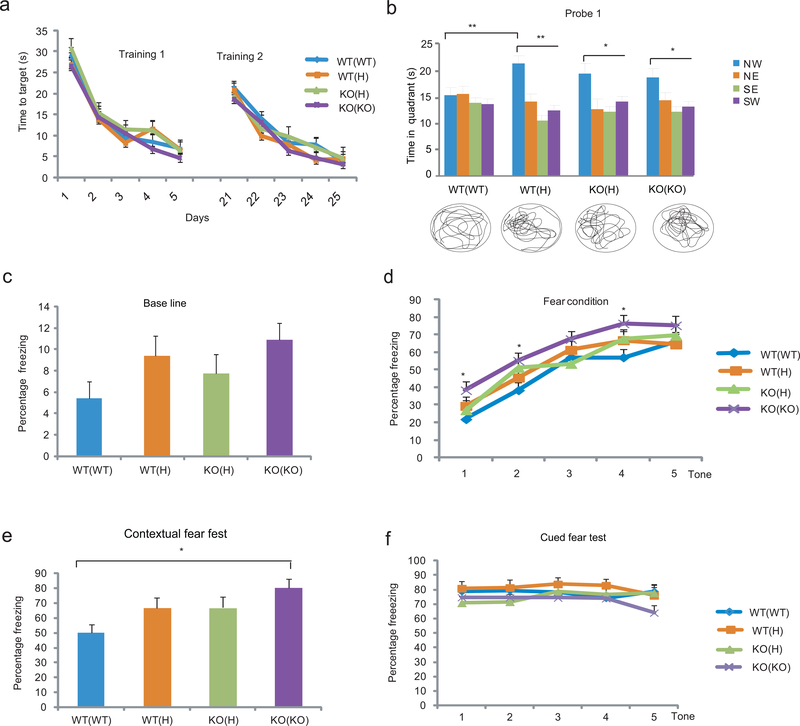Figure 1.
Maternal TNF deficit enhances cognitive functions in the offspring. (a) Training in the MWM with hidden platform. Although there was an effect of session in both the first and second training period (Repeated measures ANOVA: F4,752=73.38, P<10−5 and F4,640=45.29, P<10−5, respectively; N= 8,11,12,13/group), there was no genotype or genotype x session effect and consequently no significant difference between the groups at any time point. Data are from two independent experiments Data are shown as means ± SE. (b) In probe trial 1, two way ANOVA showed a significant effect of quadrant (F3,168=11.85, P<10−5) and LSD posthoc. test indicated that only the offspring of H and KO parents (but not those of WT parents) spent more time in the NW quadrant, the location that previously contained the platform (*p<0.05, **<0.005, ***<0.0005, NS=not significant; N= 8,11,12,13/group). To be considered as a significant change, time in NW target quadrant had to be significantly different from the time in all three other quadrants (lowest significance level among the three is displayed). The trace of movements is also displayed at the bottom of the panel. NW, North-West; NE, North-East; SE, South-East; SW, South-West. (c) Contextual and cued fear responses of the offspring of TNF H and KO parents. Baseline freezing (before conditioning) was not significantly different between the groups (ANOVA: F3,47=2.13, P=0.11; N=11,11,14,15/group). Data from three independent experiments (d) There was both a session- and a genotype-effect on freezing during context conditioning (Repeated measures ANOVA: F4.188=64.43, P<10−5 and F3.47=3.70, P=0.018, respectively) with KO(KO) offspring showing increased freezing compared to WT(WT) and WT(H) animals at the indicated time points (LSD posthoc; *p<0.05 vs. WT(WT) and #<0.05 vs. WT(H)). However, at the end of the training, the KO(KO) group was no longer different. (e) KO(KO) offspring showed an increase in contextual fear response (ANOVA: F3,47=4.25, P=0.010. Dunett T3 posthoc test; *p=0.006. When baseline measures were included as a covariate, the increase in contextual fear reaction in KO(KO) mice was still significant P=0.022). (f) The TNF deficient maternal environment has no effect on cued fear conditioning (F3,47:= 1.06, P=0.38).

